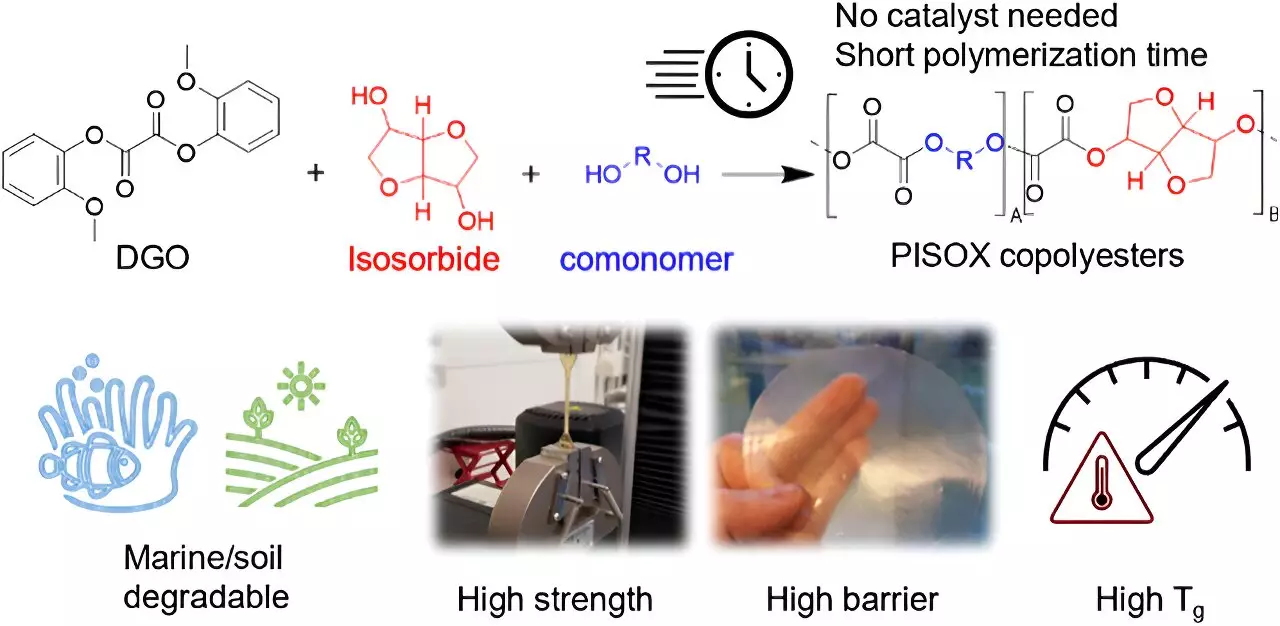In an exciting development for the world of sustainable materials, scientists at the Van ‘t Hoff Institute for Molecular Sciences have unveiled a revolutionary class of PISOX polymers, which are derived from both biological sources and CO2. Their recent publication in ACS Sustainable Chemistry and Engineering reveals the remarkable characteristics of these new polyesters and hints at their promising applications. This breakthrough signifies more than just a new type of polymer; it represents a significant leap towards reducing plastic pollution and enhancing environmental stewardship.
A Unique Blend of Performance and Sustainability
What sets PISOX polymers apart is their unique combination of performance traits coupled with a commitment to sustainability. Unlike traditional plastics that often persist in the environment for centuries, PISOX materials exhibit impressive thermal and mechanical stability while remaining biodegradable. In practical terms, this means they can decompose naturally in home-composting setups in a matter of months, and under aqueous conditions, they can hydrolyze within a year without requiring additional enzymes.
This remarkable biodegradability is crucial, especially as society grapples with the challenges posed by plastic waste. PISOX appears to offer a dual benefit: enhanced performance for consumer products without the long-term environmental costs associated with conventional plastics.
Collaborative Innovation with Industry Leaders
The development of these innovative polymers has been bolstered through collaborative efforts with industry leaders like LEGO and Avantium. With Prof. Gert-Jan Gruter, a prominent figure in sustainable chemical technology, at the helm, the research not only exhibits academic rigor but also addresses real-world applications. It underscores how partnerships between academia and industry are indispensable in driving innovation that aligns with sustainability goals.
Furthermore, the promise of using PISOX polymers extends beyond mere consumer goods, venturing into various sectors such as agriculture, packaging, and even unconventional applications like temporary artificial reefs. These reefs would support marine life, only to dissolve harmlessly into seawater once their purpose has been fulfilled. Such an application highlights the innovative potential of PISOX in ecological restoration and emphasizes the role of sustainable materials in addressing global challenges.
Catalyzing Change Across Different Sectors
The implications of PISOX polymers are vast. For instance, in gardening and agriculture, the use of compostable plastic bags and mulch films can pave the way for more sustainable farming practices, minimizing the ecological footprint of these sectors. Furthermore, their introduction as an alternative to conventional polymers such as PET and ABS suggests a future where products that are both effective and environmentally conscious can co-exist.
The exploration of niche applications such as personalized 3D printed coffins for use in resomation (alkaline hydrolysis) demonstrates the versatility of PISOX polymers. This not only answers personal preferences in death care but also supports an environmentally respectful end-of-life process that aligns with society’s increasingly conscientious mindset toward sustainability.
While the journey of integrating PISOX polymers into mainstream use is just beginning, the foundational research and innovation presented by Kevin van der Maas and his team mark an important step towards shaping sustainable materials for a better future.

